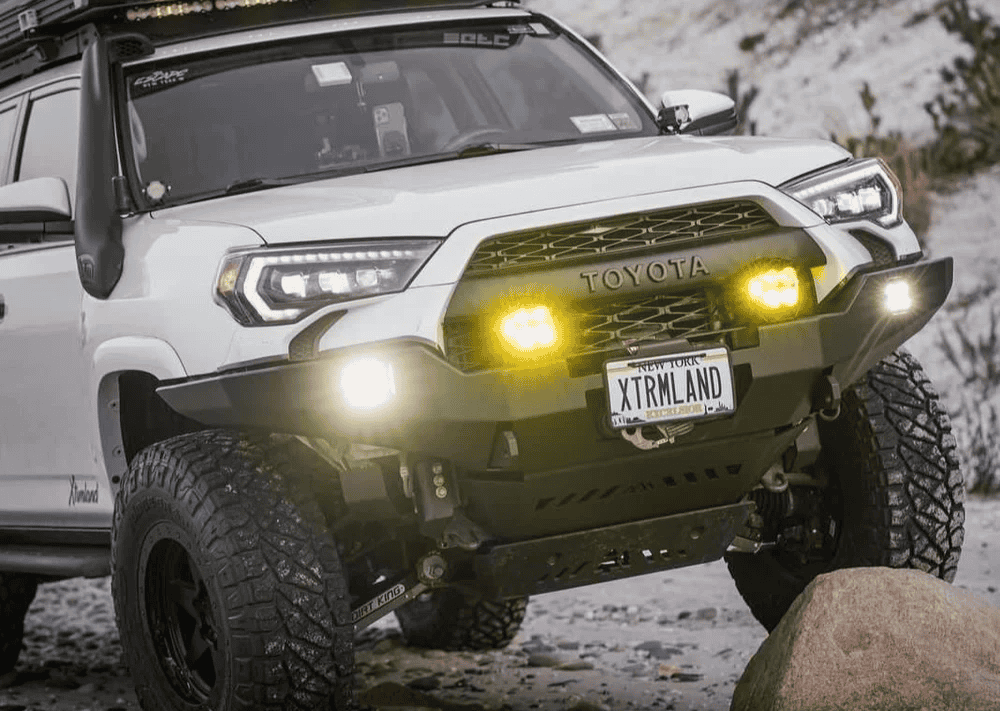Overland Vehicles

Choosing off road tires for overland trucks begins with honest terrain mapping. If most miles are highway with occasional gravel, an all terrain pattern with tighter tread blocks keeps noise low and wet grip predictable. Regular trips through deep ruts and clay call for a more open lug design that clears packed mud. Long desert crossings reward a tougher sidewall and a compound that resists heat. Snow travel benefits from siping density and the three peak mountain snowflake rating, which signals tested winter traction. Write down your real mix of pavement, dirt, rock, and seasonal weather, then match the pattern to that reality.
All terrain tires blend block stability and siping for mixed surfaces, offering better wet braking and less hum on the interstate. Mud terrain tires trade some pavement comfort for larger voids that eject muck and bite on ledges. For many overland builds, a modern all terrain is the sweet spot, while a mud terrain makes sense when trails are consistently soft or deeply rutted.
Size is not only about looks. Larger diameters add ground clearance and a longer contact patch, but they can reduce acceleration and strain braking. Width influences flotation in sand versus the ability to cut through to firm base in slop. Use a fitment calculator to model diameter change, speedometer error, and potential fender rub. Confirm turning clearance at full lock and compression.
Overland trucks carry rooftop tents, water, fuel, tools, and armor. That weight demands the right load range. Look for LT construction with a load index that meets or exceeds the axle’s real world burden. Load range E remains common, though some half ton platforms ride better on a lighter load range when payload is modest. Sidewall strength matters when airing down on rocks, where extra plies and robust shoulder design reduce pinch and puncture risk.
Smaller wheels with taller sidewalls allow safer air downs and improve compliance across washboards. Wheel offset changes scrub radius and fender clearance. Too aggressive of a stance can increase fender contact and stress steering components. Aim for a wheel and offset that keep the tire tucked enough to cycle through suspension travel without trimming, or plan clean, intentional trimming.
Air pressure is a performance knob. On pavement, use the pressure that supports load and keeps temperatures in check. On trail, reduce pressure to widen the contact patch, smooth chatter, and gain traction. Start conservative, monitor heat, and avoid de-beading by pairing appropriate pressure with bead seat design. Rotate every five thousand to six thousand miles, including the spare in a five tire rotation to equalize wear and extend the set’s life.
Tread block shape, voids, and compound determine hum, vibration, and braking. Newer all terrain designs deliver quieter cruising than older generations and stop shorter in the wet. If highway range is a priority, favor patterns that publish noise ratings and independent wet performance scores. A fresh alignment and road force balance often tame shake that gets blamed on tires.
If you regularly drive snow or ice, the three peak mountain snowflake emblem signals a tire tested for severe snow. Many all terrain models carry this badge and add siping that helps on cold pavement. Chains still matter in mountain passes, but a three peak tire will feel more secure when temperatures drop well below freezing.
Stone drilling between lugs can lead to punctures. A stone ejector design and regular visual checks help. Sidewalls take abuse from sharp shale and hidden roots; reinforced shoulders and thicker sidewalls resist cuts. After rocky trails, inspect inner and outer sidewalls and remove lodged stones to protect belts and maintain balance.
Aired down tires improve grip and comfort but can increase rolling resistance. Think of air downs as a temporary traction tool; air back up before long highway stretches to protect range and reduce heat. A portable compressor speeds camp pack-out and keeps pressures consistent across seasons.
Taller and heavier tires change effective gearing and braking feel. Some trucks benefit from a mild gear change if you add significant diameter, and many benefit from a brake service to restore pedal confidence. Alignments, extended bump stops, and a matched suspension keep steering precise and reduce cupping.
If your map includes rocky climbs one weekend and a thousand mile highway run the next, pairing the right pattern with the right suspension and protection package matters. Our team builds trucks that handle real payload with calm steering and predictable braking. See examples on our page for Explore overland rigs, where we outline complete builds curated for mixed terrain travel. If you are planning a tire size change, our custom overland upfit process covers fitment, alignment specs, and wheel choices that preserve turning radius and ride quality. New to the shop and want to understand our approach to craftsmanship and service? Read more at why choose OZK Customs.
Share your routes, payload, and target tire size. We will translate that into a road quiet, trail ready setup that includes proper load rating, pressure strategy, and a suspension tune to match. Your truck should drive straight, stop confidently, and float over corrugations without beating you up. Let us spec and install the package that makes every mile smoother and every trail safer.
Ready to build a truck that rides right on trail and on highway? Tell us about your terrain, mileage, and payload. OZK Customs will spec the tire, suspension, and protection package that fits your routes, not a catalog. Share a few details and we will map your overland upfit from tires to racks to lighting.
ADDRESS:
6159 E Huntsville Rd, Fayetteville, AR 72701
PHONE:
(479) 326-9200
EMAIL:
info@ozkvans.com